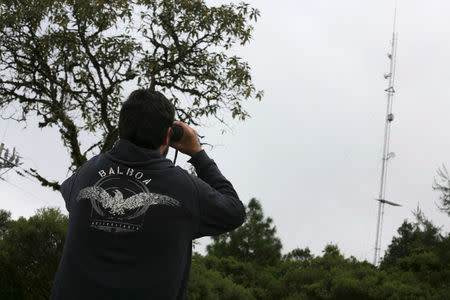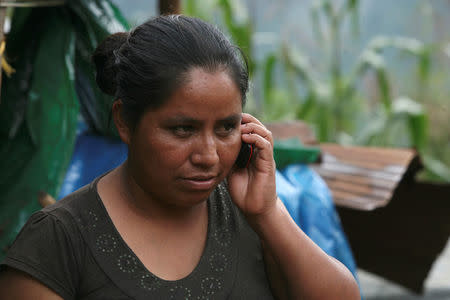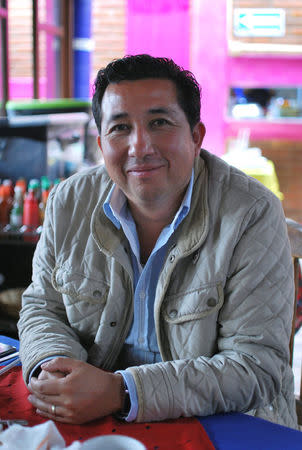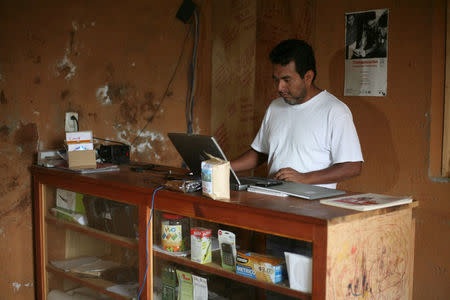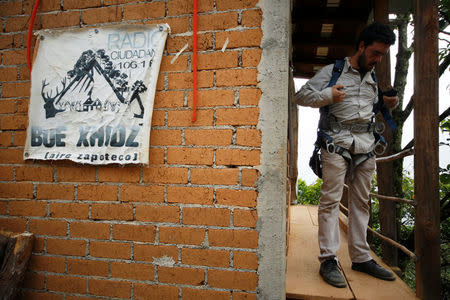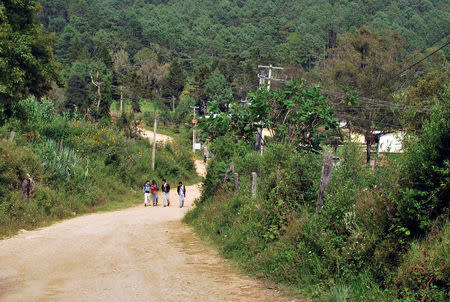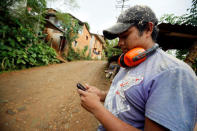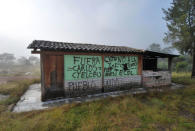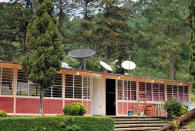As Mexico lauds telecom reform, rural poor search for connection
By Christine Murray SANTA CRUZ ITUNDUJIA, Mexico (Reuters) - Toddler Priscila Rubi Sanchez lived in a remote Mexican hamlet with no fixed line or cell phone network, so when a mouthful of corn partially blocked her throat late one night and her parents could not call for help, she died. Life is tough in Santa Cruz Itundujia in the mountains of Oaxaca state and it is made even harder here and in other isolated towns throughout Mexico's rugged interior by a lack of connectivity that complicates everything from education to getting help in medical emergencies. Tales abound among the municipality's more than 10,000 residents of daily obstacles thrown up by having no phones. The woman who had to walk miles to report that her husband had been shot; the car crash victims who wait hours for assistance, the women who give birth before reaching hospital. In these remote indigenous hills, President Enrique Pena Nieto's telecommunications reform, credited with slashing prices for many Mexicans and boosting competition against billionaire Carlos Slim's company America Movil, is coming up short. "In an emergency situation, whether it is because of accidents or if there is an emergency in the municipality, there is no way of communicating," said Eric Cruz, 37, the mayor of the town nestled in the Sierra Sur mountains, some six hours from Oaxaca's state capital. "As a result, the number of deaths goes up." Almost a third of Mexico's population is estimated to live with no mobile subscription, according to global wireless industry body GSMA, meaning Latin America's second largest economy has a lower percentage of cell phone users than countries like Argentina, Uruguay and even Nicaragua. In the future, tech giants like Facebook , Alphabet Inc. and Elon Musk's SpaceX's use of drones, balloons or satellites to connect remote corners of the world may benefit Mexico’s isolated pueblos. But for now places like Santa Cruz Itundujia survive using a rudimentary radio network to reach far away communities, or makeshift and unstable solutions like cheap cell signal repeaters. Outlying hamlets are without even public phones to call the outside world. Mexico's reform has undoubtedly done some good, such as creating special licenses for small rural operators. But a flagship coverage project, a tender to build a 4G wholesale mobile network to be awarded later this year, has a minimum reach of just 85 percent, and recent budget cuts decimated a public Internet program. "I don't think Mexico has ever designed a universal access program seriously," said Judith Mariscal, director of the telecoms research program at Mexico's CIDE university. "The reform was betting on the wrong business model." Mexico has the most unequal access to cellphone coverage in Latin America, according to a recent World Bank report. The country does not publish official numbers on the percentage of its population living in areas with no, or limited, coverage. America Movil, which is Mexico's largest cell network provider, says its network covers almost 95 percent of the population. The government does not publish audits of those figures. LIFE UNCONNECTED It took 20-month-old Priscila Rubi Sanchez's parents more than two hours to reach Santa Cruz Itundujia's clinic from their hamlet Iturbide when she began to choke on her food one night in late September. She was still partially breathing when they arrived in the town at midnight but died some time after. Health official Rocio Aparicio Garcia, 36, said the clinic didn't have the equipment to remove the blockage, which had moved into the girl's lungs, and with no earlier warning had no way of calling for help from a larger town. "The girl would have been saved if we had more equipment here, and more communication," Garcia said. Cruz, the local mayor, said he and his predecessors have tried to convince Telefonica's Movistar and Slim's America Movil to cover the town, but that efforts always fell apart. So in 2014, the town spent about 380,000 pesos ($20,000) on a cellular repeater, which amplifies the nearest America Movil signal from 30 km away. Its use is potentially illegal and the signal is unreliable, but there are not many good options for towns in the area. Cruz said that, without coverage, more people die from health emergencies, and even daily administration of the town is harder. "The federal government is more focused on where industry is, where businesspeople are ... They should worry more about marginalized towns," Cruz said. A government program called 'Connected Mexico' provides satellite-based Internet in local schools, but several teachers said the signal is patchy and it takes minutes to load a simple web page. Other schools have no access at all for pupils. "We don't even have a computer for them to work on," said Mitzi Puerto Jose, 36, a primary school teacher in the town. After school, kids in town hang out at a small cafe, paying a few pesos for 15-minute bursts of Internet on their phones or on clunky old computers. As part of proposed budget cuts for 2017, Connected Mexico's funding was slashed by more than 80 percent. Mexico's economic and fiscal outlook mean more government help is unlikely any time soon. The wholesale network project is to be tendered this year but with no obligation to extend coverage beyond 85 percent of the population, the government accepts that some will be left behind. "There's always going to be a percentage that is hard to get to at the margin," Telecommunications Undersecretary Monica Aspe said in an interview. "It's something the market will tell us in the shared network tender, how far can coverage go." Some experts argue there are things the government and regulator should have done, and could still. "We should impose coverage obligations and subtract it from their payment for spectrum," said Adriana Labardini, a commissioner at the Federal Telecommunications Institute (IFT), Mexico's telecom regulator. "What the finance ministry gets from spectrum ... never goes to subsidize telecommunications." SMALLER ALTERNATIVES On the other side of Oaxaca state, some small companies and non-profit groups are not waiting. In Santa Maria Yaviche, a town which sits above the clouds and is made up of zig-zagging red mud roads, non-profit group Rhizomatica has set up a community-run phone network. Rhizomatica helped get a social concession for the network, a new figure under the telecoms reform which permits the use of a small amount of spectrum for free. It rents an existing Wi-Fi network to bring signal from Oaxaca city, the state capital, into the mountains. Users pay 30 pesos a month for unlimited voice and messaging within the town. For long distance calling, including to the United States, they pay up to 1 peso per minute. But founder Peter Bloom said that getting to its 3,000 users has required a lot of effort over several years. The telecoms reform is meant to open up both infrastructure and fiber networks owned by America Movil and by state electricity firm CFE, but the details are still being ironed out. "There are some good ideas but its really not very clear whether those ideas, when they get put into action, if they're going to benefit places like Yaviche," Bloom said. Regulator IFT is overseeing the unbundling of America Movil's network, Labardini said. America Movil did not respond to requests for comment for this story. Labardini said Rhizomatica's success is proof that if pushed, the larger telecoms companies could work in poor, remote regions. "How can it not be profitable for those who already have scale?" she said. (Reporting by Christine Murray; Editing by Frank Jack Daniel and Kieran Murray)


